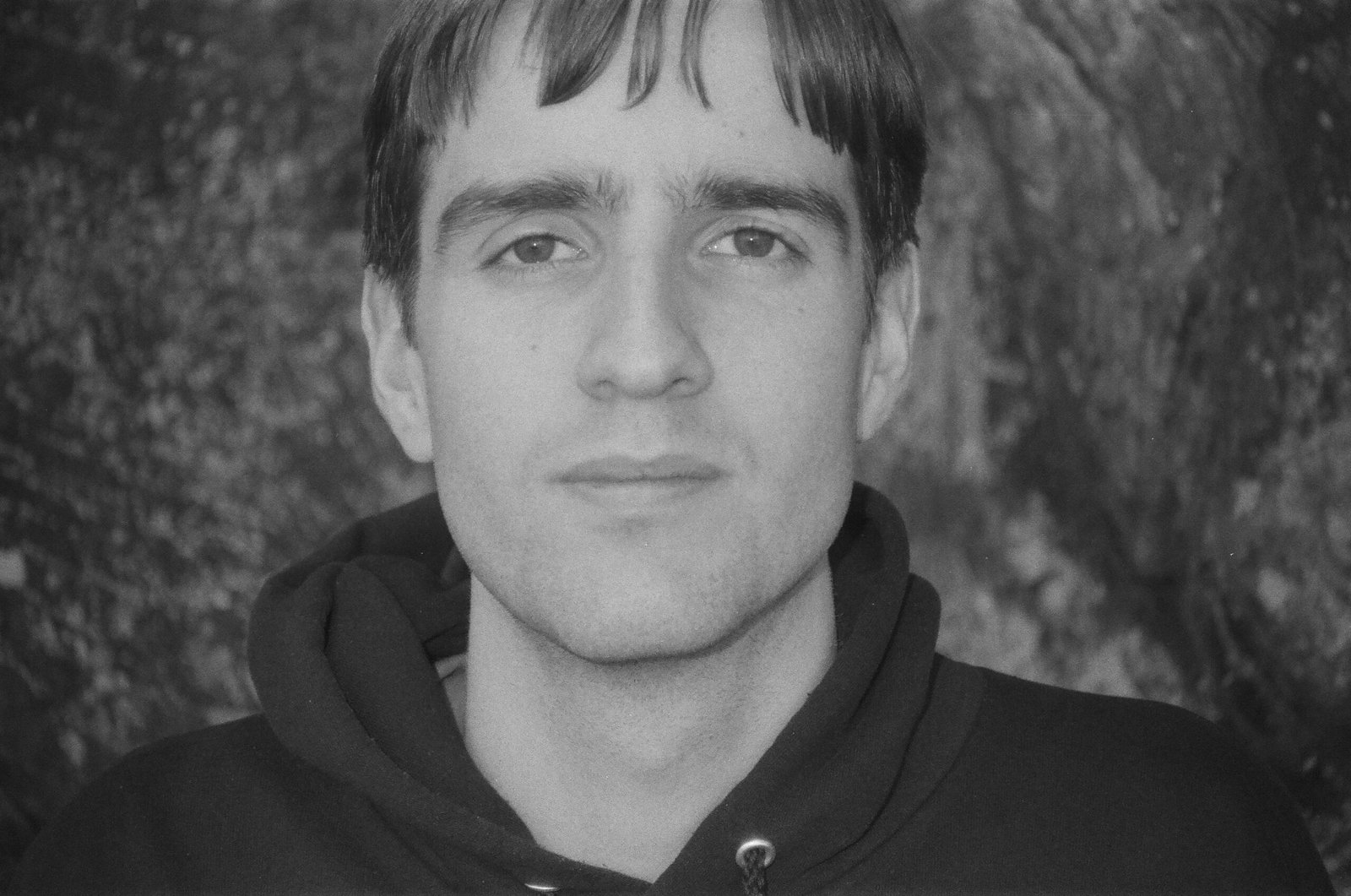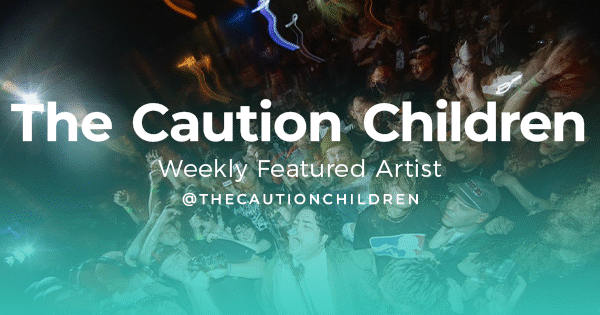In my experience, the best discoveries are genuine, meaning that they are not a) driven by a premeditated effort to find a certain type of music, and b) come from a place of open-minded wonderment at the spectacle that unfolds before your ears. That’s how I usually find my favorite music at least: stumbling through the vast expanses of the internet until something or other catches my ear. As such, I can’t always remember when or where I found the things I love, but do I need to retain such information in the first place? What matters is that I got there eventually.
All this long-winded intro talk to demonstrate how I came across our latest Weekly Featured Artist, percussionist and composer Telo Hoy from Queens, New York. His début record Rubber Wing was blown into my lap by some strange winds, and I knew from the first few notes that I was in for a special experience. Performed entirely on the vibraphone and synthesizer, Rubber Wing sees Telo Hoy tapping into a type of minimalism that’s all too rare in this day and age.
My first thought, however, teetered towards the album’s peculiar title. What am I to gleam from this combination of words, a wing made of rubber? Well, it’s a good thing I was able to pose this question to the man who came up with the title – otherwise I might’ve never gotten it right. Turns out he ‘wanted to find a title that would conjure up the feeling of making and living in this music for the many years that I did.‘ Telo Hoy goes on to say that ‘Rubber Wing brings together two things which might never go together, and creates something out of them. This is what I was looking for in a title, and in the music, something to describe the meeting point of rubber and wing, vibraphone and synthesizer, and other dualities.‘
‘Rubber Wing came out a particular period of my life while living in Chicago, mostly during the pandemic. I was living on Western Avenue, the longest street in the city, and a common route for large trucks and machinery. The album is a collection of compositions metaphorically based on the confluence of materials and animals, humans and machinery. I like to think of the vibraphone’s material construction, how it contains rubber, aluminum, rotors, nylon, wood, and felt. The circuitry of the synthesizer is the vibraphone’s companion. Wings are multiple things, living and material. How might a bird fly with one wing? What is the feeling of a star dying? I imagine the combinations of plants, animals and machinery in this work, and how they create worlds, paths, and flights.‘
Further inspiration for the album title came from the mingling of sounds and impressions gathered from his apartment while composing, the meeting of the natural world and industrial, man-made realities, and the very materials used in the instruments and objects of everyday life that surrounded him while crafting the songs on Rubber Wing. Did you know, for example, that a vibraphone has a rubber belt used for rotating the parts that create its vibrato effect? I sure didn’t!
There’s a great depth to the thought and care Telo Hoy puts into his music, philosophically and artistically, which is something I deeply admire and appreciate. His last words about the album title are particularly telling:
‘The wing pertains to birds, airplanes, and the idea of lifting off into life. I love this image of a ‘rubber wing’, because it would not function in reality.‘
Everything Is Noise: How did you get into playing percussion instruments like the vibraphone? What’s your relationship with the instruments you use?
Telo Hoy: I started playing percussion, specifically drums, around the age of 2, and was involved with music since a very young age. I only knew of drums, rhythm, and beats, up until the age of 14. My mother tried to have me learn guitar, but after one lesson, the instructor turned over the guitar and drummed on it, and I drummed back. He told my mom, ‘Sorry, you have a drummer here.‘
When I began highschool at an arts highschool, I began learning music theory and piano at school. Simultaneously, I kept taking private percussion lessons with my teacher I had had for many years. He began teaching me music theory on the vibraphone, and immediately, I fell in love with the instrument. I think, visually, I was able to understand the theory I was learning in a different way than I could on piano, but sonically, I realized that I could be a percussionist and also use harmony and melody. After all those years of just being a drummer, and not knowing what a chord was, I was elated to be able to expand what I could do musically.
I played marimba a lot in high school and college, but always found myself coming back to the vibraphone. I knew it would be a more practical instrument to own and use, but I also was drawn to the metallic quality of the instrument. I still love marimba, and hope to find a way to use it in my music again.
My relationship to my instruments is very essential. Practicing is part of my creative process as well as composing. Playing my vibraphone is like coming home. It has its own particular qualities, and at this point I know all the places of more or less resonance.
EIN: Whether intentionally or not, your instrumental palette puts you into a lineage with people like Steve Reich, Masayoshi Fujita, Midori Takada etc. Do you keep up with that kind of percussion-based classical/ambient music at all, or did you just happen to fall into it by accident?
TH: It’s an honor to be associated with these people. And I have to thank you, I actually didn’t know Midori Takada’s music and I’m so happy to know about it now.
I do keep up with this kind of music, though I would say I keep up with electronic music and contemporary classical music more specifically. I try not to have any intentions of where I fall genre-wise. I aim to create music without thinking about how it might be categorized later. I would say I identify less with specifically percussion-based music, and more with certain compositional styles.
As a side note, I once met up with Masayoshi Fujita at his studio when he lived in Berlin (I had reached out because we’re both vibraphonists) and he was incredibly kind. I found his music inspiring when I first was trying to make vibraphone music that wasn’t associated with jazz.
As much as he is a creator of music, Telo Hoy seems to be a passionate consumer of it as well, admitting that ‘I am constantly listening to a lot of music, both old and new, perhaps too much for my own good.‘ While he tries to steer clear of any obvious influences while actively writing music, he does spend time with a varied catalogue of artists, including minimalist greats like Philip Glass or Steve Reich, as well as more contemporary composers. The former two provided, in his own words, ‘the music that inspired how I first came to composing.‘
‘Rubber Wing had a range of more specific influences that I was listening to a lot during the period while writing the music, such as Ryuichi Sakamoto, Kali Malone, Patricia Brennan, Ellen Arkbro, Sarah Davachi, Oneohtrix Point Never, Samuel Reinhard, and J.S. Bach. I listen to a lot of non-classical or electronic music as well, such as The Strokes, Charli xcx, Tomberlin, Fran, The Clash, and The Velvet Underground.‘
There is also a wealth of non-musical influences that goes into the creation of Telo Hoy‘s musical cosmos. He specifically mentions ‘light patterns, photography, and visual art‘ as sources he drew from, going so far as to divulge that he ‘had a very specific imagined visual palette when creating the album, which I think is well reflected in the album cover and music videos.‘ The themes of industrialization vs. nature return in this context as well, as Hoy took inspiration from the act of physically being in spaces where those two concepts exist in close proximity.
I mentioned earlier how Rubber Wing draws from a very limited musical palette; in fact, it is stated on Bandcamp that it was recorded with nothing but a vibraphone and an ARP synthesizer. When I inquired further into this fact, incredulous as I was given the record’s pensively expansive tone, I received this answer:
‘Vibraphone was used most on the album. Every track has vibraphone on it. And yes, it was just the ARP synthesizer and my vibraphone. I did use multitracking to layer the ARP in most of the tracks, but those were the only two sound sources.‘
EIN: Your album description on Bandcamp says: ‘There is a darkness and despair that lingers. Some compositions sustain for longer than they are played, their sorrow felt through strenuous echoes and their accompanying visuals: a bird with one wing, a dying star.’ This reads vastly more dark and melancholic than the album feels, at least to me. Where do you locate that darkness, that sorrow you mentioned, and where does it stem from?
TH: I like this question, and it’s always interesting to see how people interpret the album differently. I think that the music exists in a place that can feel dark to some, but not to others. For me, there are some tracks that I know came out of a dark place for me personally. I think you can find that on “Melody for a One-Winged Bird”, “Melody for a Dying Star”, and “One Thousand Sirens.” Each one of those tracks were composed during periods of bleakness. I hesitate to go into the specifics, so as to not interfere with each person’s interpretation of the music.
That being said, I don’t think any track on the album is entirely dark. I think most of the music exists in a place of emotional resonance, but which emotion is felt depends on the listener. And as a side note, my partner is the one who wrote the liner notes, so she brought her own interpretation into them.
Improvisation is a key feature in the music Telo Hoy puts into the world, especially in the context of a live show. He says that, depending on the circumstances, there are two main types of show you can reasonably expect from him. If it’s logistically feasible to bring his vibraphone, he will begin by improvising on the instrument before shifting his focus towards pieces from Rubber Wing, incorporating samples and synths into both if possible; otherwise, he has done improvised shows with his synths and whatever instruments the venue might have at hand before as well.
‘Moving forward, I am probably going to be experimenting with a set that has less material from the album and is more longform, using live vibraphone and electronics. I also would say that I hope to play some shows with other instrumentalists soon.‘
Speaking of future plans, Telo Hoy has a few of them, including the desire to continue writing music. A new album is apparently taking form, slowly but surely, which is very welcome news indeed. While he enjoys the live aspect of his profession, he wants to dedicate 2025 to the act of composing. Other ongoing projects are scoring a short film and providing vibraphone parts to a friend’s album recordings. The wish to engage with others in a live setting resonates in his plans for the future as well: ‘One of my goals for the future is to play more music with other people, something I haven’t done as much of since before the pandemic.‘
I had also asked Telo Hoy about his feelings towards the rollout of his début record; more specifically, I wanted to know whether or not the things he achieved with Rubber Wing matched the goals he set for himself during its creation. His answer reflects a certain struggle, but ultimately betrays a feeling of gratitude and accomplishment, as he explains:
‘I feel really grateful for all that I was able to achieve with the record. Going into it I had hoped to find a label to release it, and to have a bit more support in the promotion and distribution of the music. In hindsight, I’m really happy to have self-released it, as it gave me full control over the process. I’m blown away by how far the music has gone, and I’m thrilled that people have connected to it around the world.
‘I feel that I achieved a strong album of music for a specific instrumental palette, and was able to articulate musical ideas that I had been working with for a long time into a concise form. I’m also really proud of how the album came out visually, and I’m really happy that we were able to make music videos for two of the tracks, something I really thought would never happen. For a self-released debut album, I can’t really imagine it going any better.‘
As someone who spends an inordinate amount of time curating, writing about, and listening to music, it’s refreshing to hear records like Rubber Wing, which carry their influences outwardly but also have a rich undercurrent to explore; likewise, it was very enjoyable to be guided through the thought process of its creator, who in turn revealed himself to be a deep and meticulous thinker, as well as a generous conversationalist. I adore the wealth and breadth of information he was willing to share with me in the process of putting together this article, and I can’t thank Telo Hoy enough for his beautiful input.
It’s safe to say that my interaction with the man behind the music has only served to strengthen my bond with Rubber Wing. I hope this Weekly Featured Artist piece can serve that same purpose, or introduce you to Telo Hoy and his music in the first place. As I am wont to do, I would like to leave that last words to the artist himself. When asked to address the Everything Is Noise readership head-on, he had the following to say:
‘Thank you so much for listening! I am always open to new connections and collaborations. And thank you so much to Dominik for asking me to do this feature.‘







Beautiful music and beautifully written review